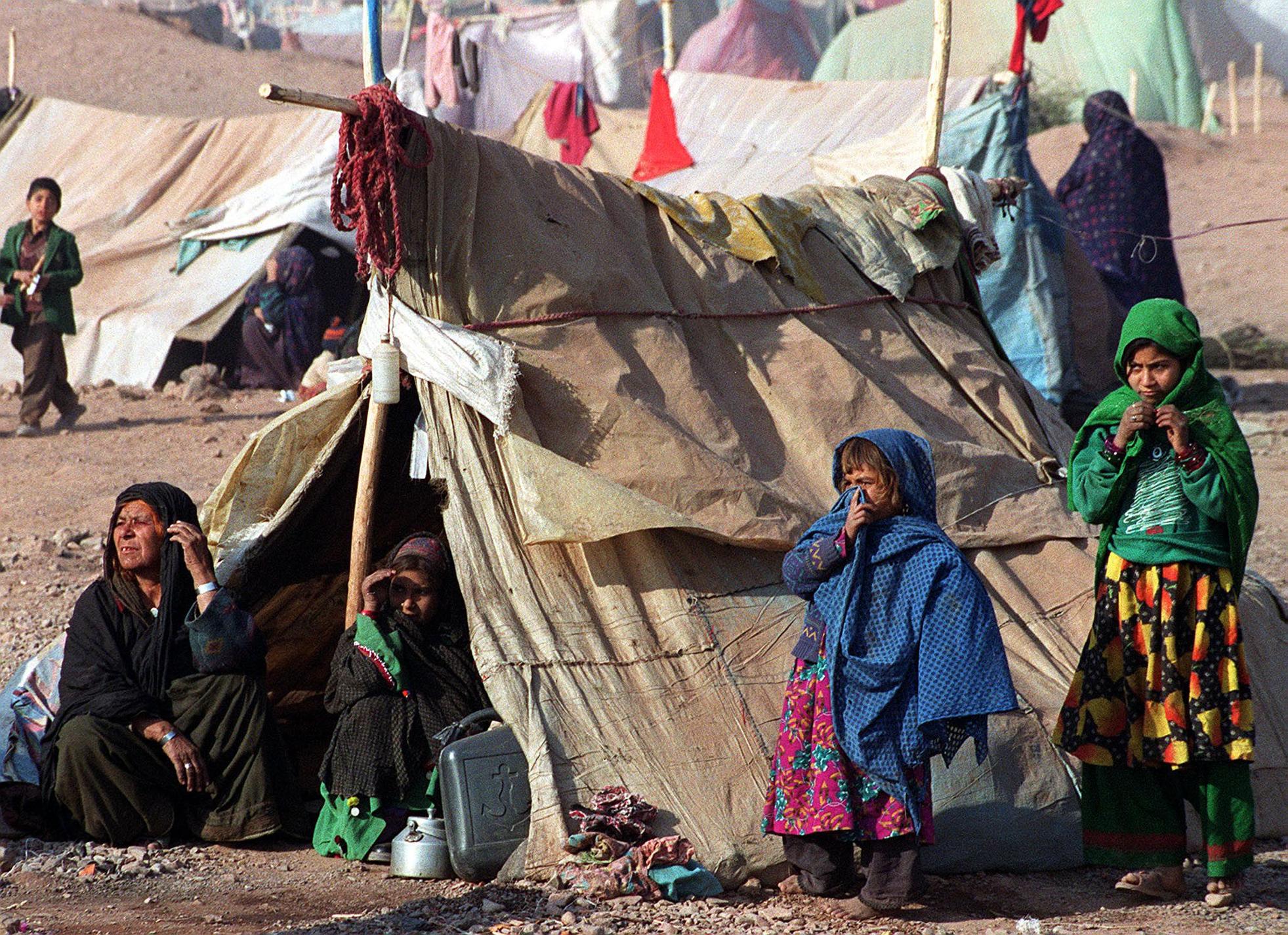Among the Afghan refugees in Mardan, northwest Pakistan
April 2000: Robert Fisk visits a refugee camp in Pakistan and speaks to those who managed to escape the Taliban

Their camps are little Afghanistans, streets of mud and wattle huts, a wooden gate padlocked on to dry earth, a flurry of goats, wooden roofs overhanging earthen walls, a dust road and women who scurry into darkened rooms at the sight of a stranger. In the schools, the girls are taught, “Yak, du, se, char, panj, shash…”, chorusing the Farsi numerals from beneath a tent.
The United Nations would like them all to go home, all 1.2 million of them in Pakistan. In the UN compound in Peshawar – with its carefully laid out gardens and air conditioning – they run a “repatriation” programme to send the Afghans “home”. Travel to Jalalabad or Kabul and you’ll be given rupees, a blanket, food. But why do you need a “programme” if all is well in Afghanistan? It’s not, of course, as the UN well knows. If the Taliban have provided security, they have created a state without a government, a theocracy without a nation. So is it any “surprise that all these miniature Afghanistans have blossomed along the border with Pakistan?
Subscribe to Independent Premium to bookmark this article
Want to bookmark your favourite articles and stories to read or reference later? Start your Independent Premium subscription today.
Join our commenting forum
Join thought-provoking conversations, follow other Independent readers and see their replies